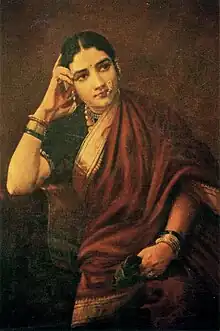
These ornaments are attached through a piercing in the nostril.
Nostril ring origins
The Middle East is the birthplace of the nostril ring, with the first record of nostril piercings tracing back 4,000 years. In the book of Genesis, Abraham’s servant gifts young Rebekah an array of jewellery as a marriage offering on behalf of her future husband, Isaac. Among the gifts and trinkets was a golden earring called a “Shanf” also known as a nose ring.
Hindu tradition

The nose ring, called a Nath (Hindi: नथ, IPA: [nətʰ]) in some Indo-Aryan languages, is referenced in early Hindu Vedic texts and became popular around the 9th and 10th centuries becoming a symbol of a woman's marital status. The Nath in its full form - with a chain connected to a hairpiece or earring - is traditionally worn by a Hindu woman on her wedding day to honour and pay reverence to the Goddess, Parvati, consort to Shiva.
The "Nath" also displays economic status amongst Hindus; wives of kings, ministers and wealthy families wore naths made of pearls, sapphire and kundan while others wore those made of silver. From the 15th century onwards, the ornament became quite popular, and saw variations of using clove, thorns, and nails during the 17th and 18th centuries. Contemporary designs and materials arrived in the 20th century.[1]
See also
References
- ↑ Shanti Kumar Syal (2005). Pragatiśīla nārī (in Hindi). Delhi, India: Atmaram & Sons. p. 171. ISBN 9788170436478.
External links
 This article incorporates text from a publication now in the public domain: Easton, Matthew George (1897). "Nose rings". Easton's Bible Dictionary (New and revised ed.). T. Nelson and Sons.
This article incorporates text from a publication now in the public domain: Easton, Matthew George (1897). "Nose rings". Easton's Bible Dictionary (New and revised ed.). T. Nelson and Sons.